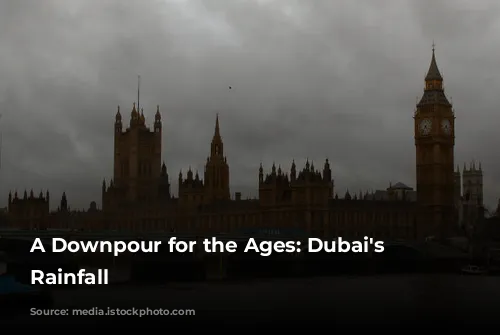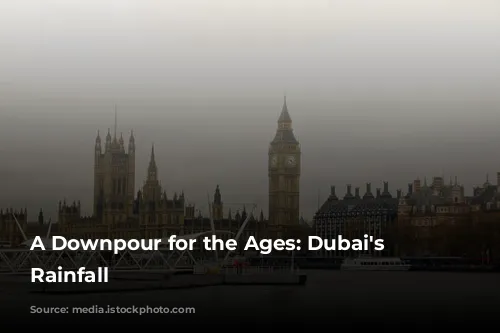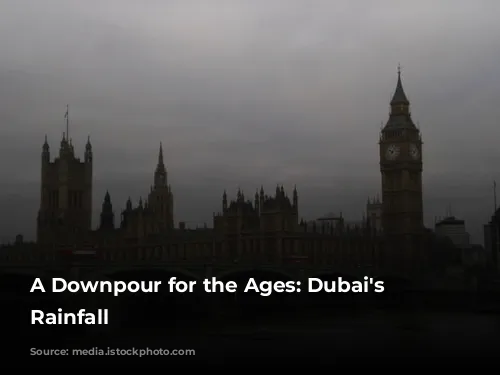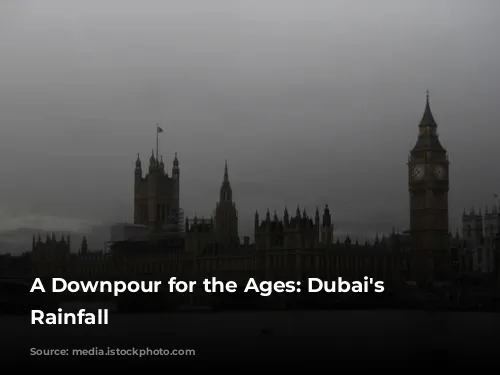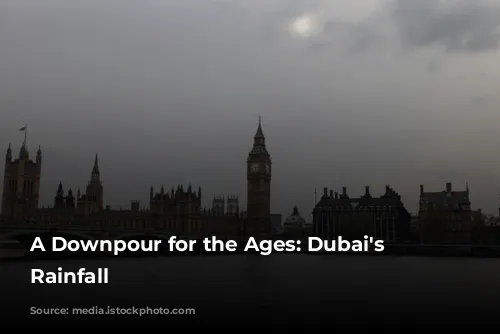The United Arab Emirates (UAE) was plunged into chaos after experiencing its heaviest rainfall in 75 years. Some areas received an astonishing 250 mm (nearly 10 inches) of precipitation in less than a day, a record-breaking event that left the country reeling.
This deluge, which occurred in late July 2023, was unlike anything seen in the UAE since records began in 1949. The rain flooded streets, uprooted palm trees, and shattered building facades, bringing the vibrant metropolis of Dubai to a standstill.
The impact of the downpour was widespread and severe. Flights were canceled, traffic came to a complete halt, and schools were closed. Dubai, a popular tourist destination, was caught off guard by the unprecedented weather event.
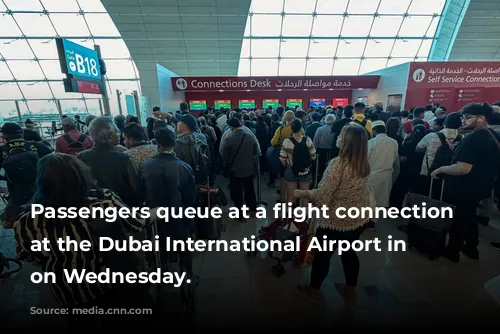
Dubai Drowned: Streets Turned to Rivers
The intensity of the rainfall was truly remarkable. Over 100 mm (nearly 4 inches) of rain fell in just 12 hours, a quantity that typically falls in an entire year. This extreme weather event brought Dubai to its knees.
The rain fell so heavily and rapidly that many motorists found themselves trapped in their vehicles as floodwaters rose, turning roads into raging rivers. Some were forced to abandon their cars, leaving them to the mercy of the surging waters.

Climate Change’s Impact on the Middle East
This extreme rainfall event is not an isolated occurrence. Such events are becoming more frequent as the atmosphere warms due to human-induced climate change. A warmer atmosphere acts like a sponge, absorbing more moisture and releasing it in the form of intense rainfall, leading to devastating floods.
The extreme rainfall in the UAE was linked to a larger storm system that swept across the Arabian Peninsula and the Gulf of Oman. This same system brought unusually heavy rainfall to neighboring Oman and southeastern Iran, highlighting the regional impact of this meteorological event.
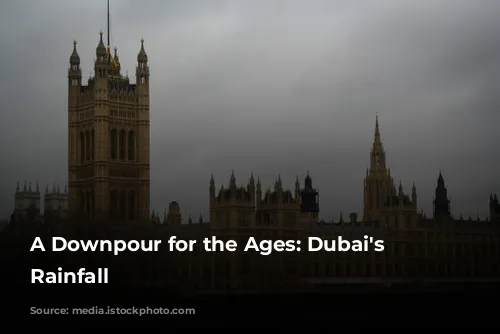
A Region in Crisis: Casualties and Disruptions
In Oman, at least 18 people perished in flash floods triggered by the heavy rain, including schoolchildren. The tragedy underscored the devastating consequences of the extreme weather event.
The UAE also saw loss of life. A 70-year-old man died after floodwaters swept away his vehicle in the northern emirate of Ras Al-Khaimah.
The impact of the rainfall extended beyond the UAE and Oman. The storm system continued its eastward journey, impacting parts of southern Iran and Pakistan, regions that typically receive little rainfall this time of year. The southernmost Iranian city of Chabahar recorded 130 mm of rain, illustrating the far-reaching consequences of the storm.

Dubai in Lockdown: Transportation Chaos and Citywide Disruptions
The torrential rain wreaked havoc on transportation systems, leaving commuters stranded and disrupting normal life in Dubai. People attempting to reach the city center were trapped on highways, unable to navigate the flooded roads.
One Dubai resident, Sofie, described the chaos: “The scary part is that there was nowhere you can go.” She was stuck outside her home for nearly 12 hours, forced to sleep in her car as surrounding roads remained submerged.
Taxi drivers, unable to navigate the blocked roads, refused to take passengers further, leaving commuters stranded on Dubai’s main artery. Some commuters resorted to walking through giant puddles, searching for alternative ways to reach their destinations.
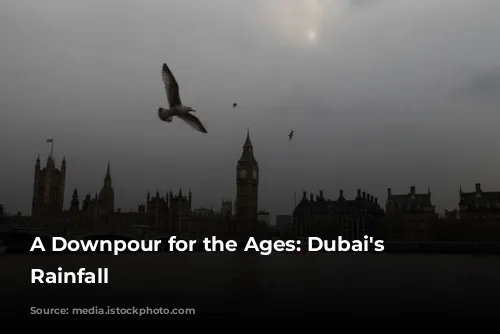
The World’s Second Busiest Airport Under Water
The impact on Dubai International Airport, recently crowned the second-busiest airport in the world, was particularly striking. Video footage captured the tarmac, typically teeming with activity, submerged underwater as aircraft attempted to navigate the floodwaters. The spectacle transformed the airport into a watery runway, with large jets appearing more like boats as they moved through the inundated airfield.
The disruption to airport operations continued even after the storm cleared. Access roads remained blocked by flooding, and numerous airlines, including the flag carrier Emirates, reported flight delays. Budget airline Flydubai canceled all flights until 10 a.m. local time.
The airport issued a warning advising travelers “NOT to come to the airport, unless absolutely necessary,” citing ongoing flight delays and diversions. Emirates suspended check-in for departing passengers due to “operational challenges caused by bad weather and road conditions.”
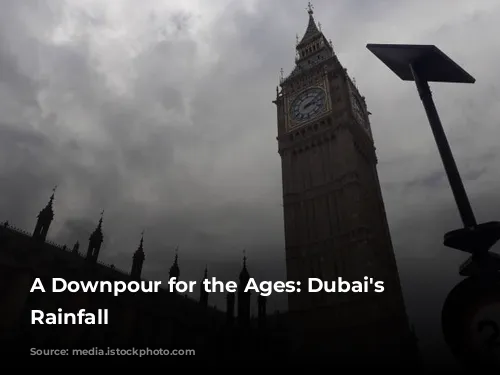
A City Under Siege: Homes and Businesses Flooded
The extreme weather event left many Dubai residents unable to leave their homes due to waterlogged streets. Delivery services ceased functioning, and many residents were confined to their homes, unable to access essential services.
Video footage from social media showed the devastating impact of the floods. Furniture was seen flying off balconies, and in the Dubai Marina, a man-made canal lined with skyscrapers, furniture from restaurants was washed away by strong currents.
Images showed traffic gridlocked on Dubai’s Sheikh Zayed Road, a major thoroughfare. Luxury cars were almost completely submerged in the Business Bay district, home to numerous apartment buildings, offices, and retail outlets. Even a Dubai Metro station was flooded, forcing commuters to wade through ankle-deep water.

Tourists Trapped: Stories of Chaos and Disruption
The storm brought chaos to tourists as well. Madiha Khawaja, a visitor from London with her husband and two young children, described the experience as “helpless.”
The heavy rain disrupted building lifts, even in some of Dubai’s tallest skyscrapers. Khawaja spent 45 minutes navigating the stairs to reach her 27th-floor apartment in the heart of Dubai, a grueling journey undertaken to find shelter and respite for her tired children.
Upon reaching their apartment, they were met with dry taps, no drinking water, no telephone service, and no internet connection. “The kids were hungry, and I as a mother was getting very anxious and upset,” she said.
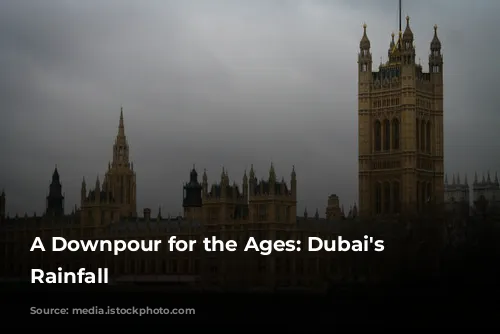
The Truth About Cloud Seeding
Rumors circulated that the chaos was caused by cloud seeding, a practice used to enhance rainfall in arid regions. However, an official from the UAE’s National Center of Meteorology stated that the rain was not a result of cloud seeding, putting those rumors to rest.
The UAE has been engaged in cloud seeding since the 1990s, but this particular rainfall event was not attributed to the practice. It was a result of natural weather patterns, highlighting the unpredictable nature of climate change.
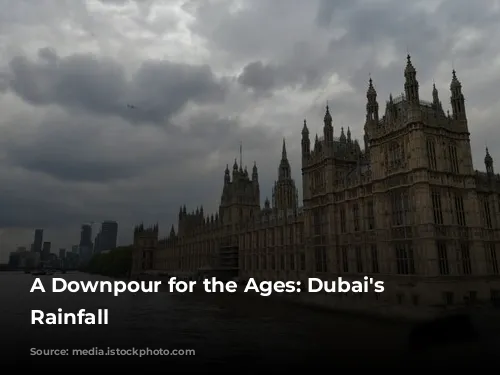
A City Prepared for Sun, Not Rain
Dubai, like the rest of the Persian Gulf region, has a hot and dry climate, making rainfall a rare occurrence. The city’s infrastructure, designed for sunny days, was unprepared for such extreme weather events, resulting in widespread disruptions and chaos.
The unprecedented rainfall in the UAE serves as a stark reminder of the impact of climate change and the need for cities and countries to adapt to the changing weather patterns. The event highlighted the vulnerability of even the most technologically advanced urban centers to the forces of nature.
